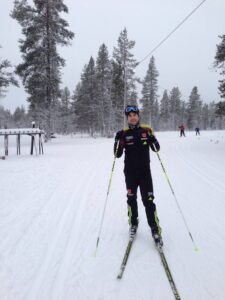As an Associate Editor of BMJ Open Sport and Exercise Medicine (SEM), Prof. Karsten Hollander was invited to present his perspective on SEM in his home country, Germany.

Tell us more about yourself
I am a Professor of Sports Medicine at MSH Medical School Hamburg, Germany. Here, I have the honour to be the Director of the Institute of Interdisciplinary Exercise Science and Sports Medicine and teach sport scientists and medical students in physiology and sports medicine. In addition, we have a university outpatient clinic in which I focus on running medicine. My main research interests are interdisciplinary sports medicine, injury epidemiology and prevention, and running from all perspectives (biomechanics, physiology, and injury prevention). After graduating from medical school, I did a medical doctorate in sports medicine, a PhD in biomechanics and my Habilitation in experimental sports medicine. Furthermore, I had the privilege to do a postdoctoral research fellowship at the Spaulding National Running Centre/Harvard Medical School, USA. In addition to my work at the university, I am the head team physician for the running (middle-distance, long-distance and marathon) and the race-walking national team for the German Athletics Association as well as for the German Ski Federation (cross-country skiing).

What is the path to becoming a sport and exercise physician in Germany, and what are the main hurdles on this path?
In Germany, there are different ways of becoming involved in SEM (clinical, academic or a combination of both). Most physicians take the clinical route and do a specialisation (any specialisation is possible) and six months of additional training in sports medicine. This can either be done under an experienced SEM physician’s guidance or with 240 hours of coursework. Furthermore, you have to volunteer 120 hours in a sports club or federation. To become involved in SEM research, you can either study medicine or sport/exercise science and conduct a doctorate in sports medicine and possibly a Habilitation in sports medicine.
The main hurdle is that there is no inherent specialisation in SEM, and there is the need to go through the usual clinical training in another discipline (e.g. internal medicine, family medicine, orthopaedic, physical and rehabilitative medicine etc.). Young physicians interested in SEM research have to combine clinical training with research for which only a few institutions give dedicated time. Therefore, becoming a clinician scientist in SEM requires a lot of enthusiasm and sacrifice, especially in the first years after graduation from medical school.
How developed is collaborative work in SEM in Germany?
The latest German conference dedicated to junior scientists involved in SEM had the overarching topic of “interdisciplinarity in SEM”. My Institute of Interdisciplinary Exercise Science and Sports Medicine has physicians, sport scientists, sport physiotherapists, sport psychologists, exercise scientists, biomechanists, engineers and data scientists working closely together. Fortunately, I have never experienced physician-first hierarchies in the institutes I have worked in.
Are exercise physiologists/scientists integrated into your healthcare system, and does health insurance cover their services?
Exercise physiologists are integrated into the healthcare system, but only in specific institutes (mainly university-based). Usually, their work is covered by all private insurance and an increasing number of public insurance.
What is done in Germany to promote SEM among students and young professionals regarding research and clinical opportunities?
We have a powerful national SEM federation (Deutsche Gesellschaft für Sportmedizin und Prävention, DGSP) which is, for example, having a biennial conference dedicated to junior scientists involved in SEM with special junior meets senior sessions. Our national academic journal, the German Journal of Sports Medicine, has a category named “Clinical review”, which is dedicated to providing concise summaries on specific topics for young SEM students and early career clinicians.
Finally, if you were Harry Potter, what would you change to SEM in Germany?
Over the last few years, many enthusiastic and talented young clinicians have struggled to combine regular clinical training with research demands and concurrent work in the sports federations. Without Voldemort, I would focus my magic power on transforming SEM into a full medical speciality in Germany. Hopefully, this could facilitate the blooming of a new generation of youth clinician-scientists and strengthen research and practical work in sports clubs and federations.